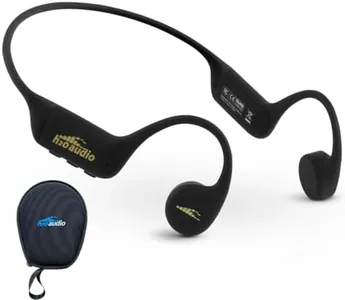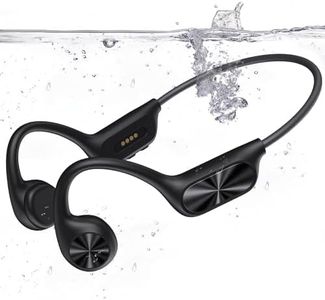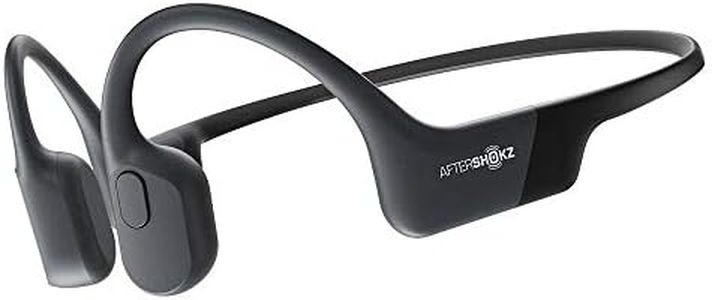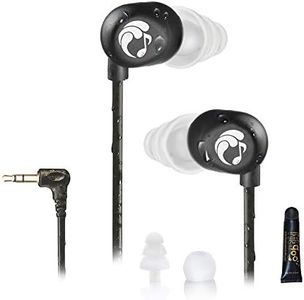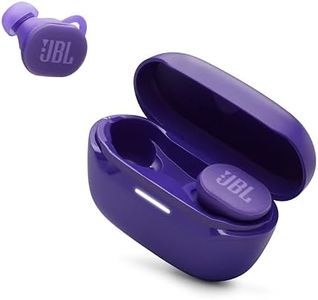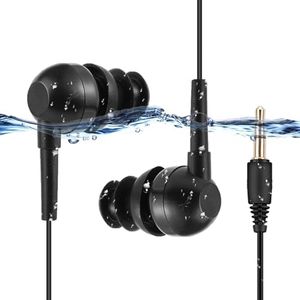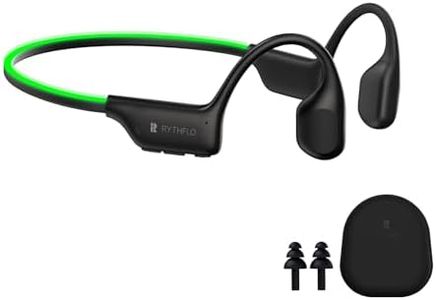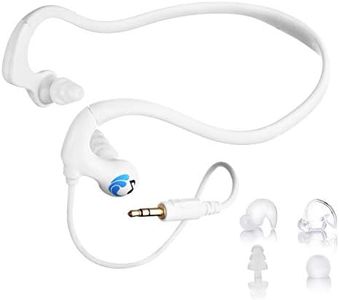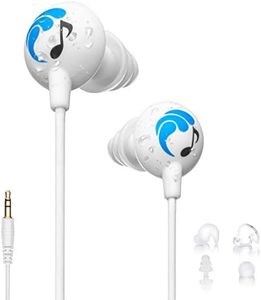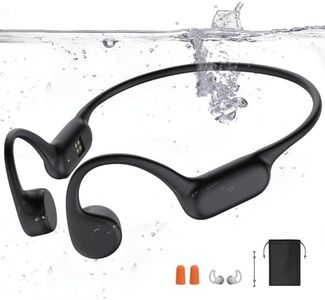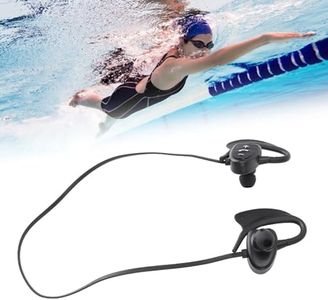We Use CookiesWe use cookies to enhance the security, performance,
functionality and for analytical and promotional activities. By continuing to browse this site you
are agreeing to our privacy policy
10 Best Earbuds For Swimming
From leading brands and best sellers available on the web.Buying Guide for the Best Earbuds For Swimming
Choosing earbuds for swimming is a little different compared to regular earbuds because you need to consider factors like waterproofing, fit, and how they store or connect to music. The best swimming earbuds will stay secure while you move, protect against water, and provide good sound even underwater. It's important to think about where and how you’ll use them – whether for leisurely swims or intense laps, and whether you want to listen to music, podcasts, or even take calls (if possible) during use.Waterproof RatingThe waterproof rating tells you how well the earbuds can resist water. Most devices use an IP or ATM rating system. For swimming, look for high waterproof ratings like IPX7, IPX8, or higher, which means the earbuds can handle continuous submersion. Lower ratings (like IPX4) only protect against light splashes and sweat, not full immersion. The main point is: if you plan to swim laps or submerge the earbuds, only choose ones rated for underwater use—the higher the rating, the safer your device in the pool.
Fit and ComfortA secure, comfortable fit is key for underwater earbuds, since movement and water can easily knock loose earbuds that aren’t shaped properly for your ear. Over-ear hooks, wing tips, or custom-molded options offer better stability. Generally, smaller, ergonomic designs are best for long swims, while bulkier models might feel less comfortable over time. Think about your ear shape, whether you swim with a cap, and how active you are – this helps you choose a design that won’t slip or cause discomfort.
Sound Transmission TechnologyThere are two main ways swimming earbuds transmit sound: traditional in-ear speakers or bone conduction. In-ear speakers work like typical earbuds, blocking the ear canal, while bone conduction transmits music through your cheekbones, leaving ears open. In-ear models tend to give richer sound, but bone conduction reduces ear fatigue and can be safer in open water because you’ll still hear your environment. Pick bone conduction if you’re sensitive to pressure in your ears, or want more situational awareness; choose in-ear for better isolation and audio quality.
Music Source (Built-in Storage vs. Bluetooth)Underwater, Bluetooth doesn’t work well because water blocks the wireless signal. Many swimming earbuds have built-in memory (usually measured in gigabytes) so you can load music or podcasts onto the device itself, which solves this problem. Some devices may still offer Bluetooth for when you’re on land, but for actual swimming, you’ll need stand-alone storage. If you only want to use them while in the pool, make sure the earbuds have enough built-in storage for your needs.
Battery LifeBattery life indicates how long you can listen before needing to recharge the earbuds. Swimming earbuds usually have a lower battery life compared to regular models due to size and waterproofing, ranging from a couple of hours up to 8 hours. If your swimming sessions are long or you don’t want to charge often, choose a product with longer battery life. For quick, occasional swims, a short battery life may not be a problem.

